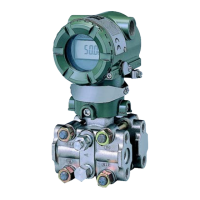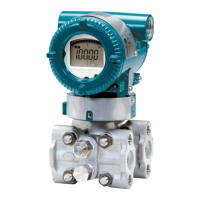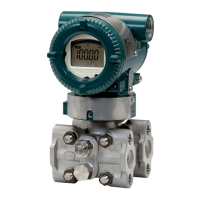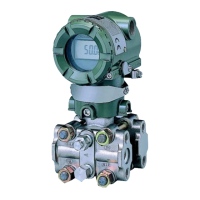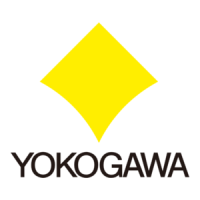<2. Handling Cautions>
2-16
IM 01C25B01-01E
Model
Capsule
code
PS*
1
(bar)
V(L)
PS.V
(bar.L)
Category*
2
EJA110E M, H, V
160 0.01 1.6
Article 4,
Paragraph 3
(SEP)
EJ110
F, L
EJX110A
M, H, V 250 0.01 2.5
EJA110E
with code
/HG
EJ110
with code
/PE3
M, H, V 250 0.01 2.5 III
EJ130
M, H 500 0.01 5.0
Article 4,
Paragraph 3
(SEP)
EJ130
with code
/PE3
M, H 500 0.01 5.0 III
EJ310
L, M, A, B 160 0.01 1.6
Article 4,
Paragraph 3
(SEP)
EJ430
H, A, B 160 0.01 1.6
Article 4,
Paragraph 3
(SEP)
EJ440
C, D 500 0.1 5.0
Article 4,
Paragraph 3
(SEP)
EJ440
with code
/PE3
C, D 500 0.1 5.0 III
*1: PS is maximum pressure for vessel itself based on
Pressure Equipment Directive 2014/68/EU. Refer to
GeneralSpecicationformaximumworkingpressureofa
transmitter.
*2: Referred to Table 1 covered by ANNEX II of EC Directive
on Pressure Equipment Directive 2014/68/EU.
(3) Operation
CAUTION
• Thetemperatureandpressureofuidshould
be maintained at levels that are consistent
with normal operating conditions.
• The ambient temperature should be
maintained at a level that is consistent with
normal operating conditions.
• Please take care to prevent water hammer
and the like from inducing excessive
pressures in pipes and valves. If phenomena
are likely, install a safety valve or take
some other appropriate measure to prevent
pressure from exceeding PS.
• Take appropriate measures at the device or
system level to protect transmitters if they
are to be operated near an external heat
source.
2.12 EU RoHS Directive
Applicable standard: EN 50581
Applicable production sites are shown below.
The condition of the RoHS compliant production
sites are as follows:
Japan, USA, Germany, Bahrain, India
Theproductionsitescanbeconrmedbythe
serial number shown in the frame of “NO.” in
the name plate of the product.
Serial numbers (9 letters): AAnnnnnnn
AA:Identicationcodeofproductionsite
Japan: Use “91” USA: Use “U1”
Germany: Use “D1” Bahrain: Use “BH”
India: Use “Y1”
2.13 Safety Requirement
Standards
Applicable standard: EN 61010-1, C22.2 No.61010-1
(1) Pollution Degree 2
"Pollution degree" describes the degree to
which a solid, liquid, or gas which deteriorates
dielectric strength or surface resistivity is
adhering. " 2 " applies to normal indoor
atmosphere. Normally, only non-conductive
pollution occurs. Occasionally, however,
temporary conductivity caused by condensation
must be expected.
(2) Installation Category I
"Overvoltage category (Installation category)"
describesanumberwhichdenesatransient
overvoltage condition. It implies the regulation
for impulse withstand voltage. " I " applies to
electrical equipment which is supplied from the
circuit when appropriate transient overvoltage
control means (interfaces) are provided.
(3) Indoor/Outdoor use

